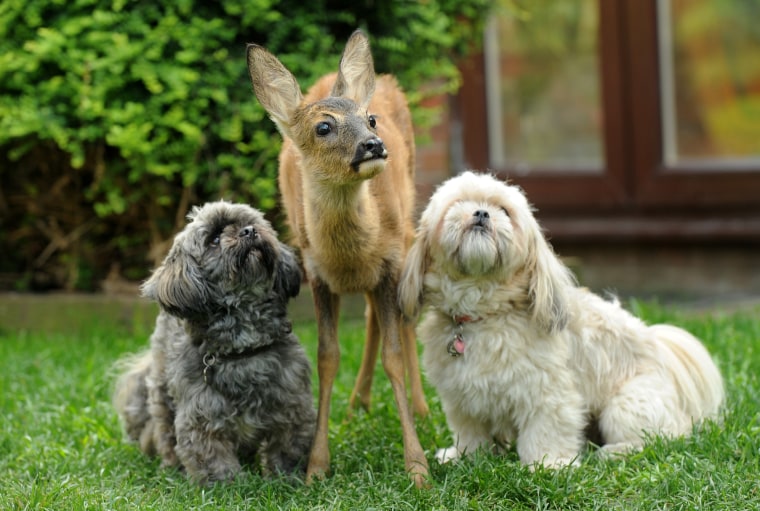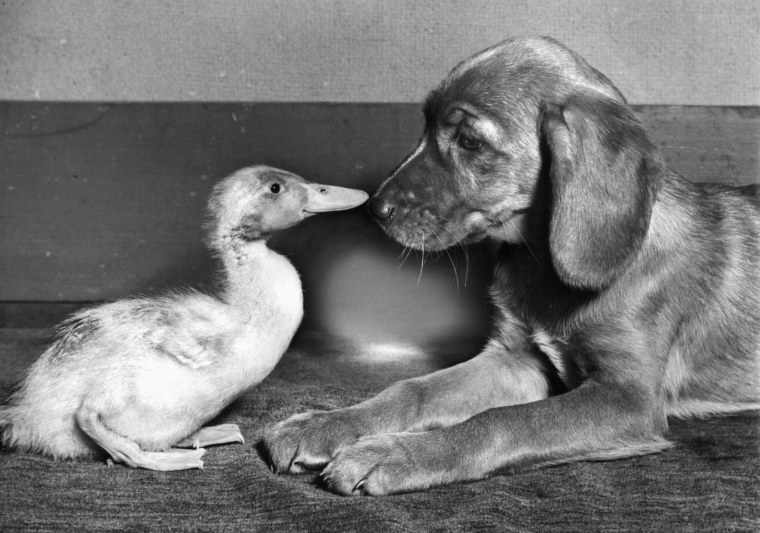Until recently, science has been reluctant to embrace the idea that animals have emotions — an observable fait accompli for anyone with a companion animal. But scientists have also ignored how non-human animals feel and express their emotions through mood and personality.
Why is science arriving so late to the notion that humans aren’t unique in our emotional responses and individual personalities? Unconscious bias certainly played a role, as scientists betrayed a desire for human-animal towards difference, if not outright superiority. None of us are immune to this confusion, not even scientists. But fear was also part of the problem: For decades, scientists have been ironically blinded by a misguided attempt at objectivity.
Luckily, this is beginning to change, and researchers are beginning to once again look closely — and creatively — at animal personalities. What scientists are finding is astounding. From crabs to coyotes to crows and a myriad of other species, animal personality and emotion is more than cocktail party conversation; personalities enable relations between humans and other species and they drive ecology and evolution.
Interestingly, science hasn’t always been this blind; there were early advances in surprising places. The father of evolutionary theory, Charles Darwin, described animals’ inner states and emotions when he embraced the notion in his 1872 essay “The Expression of the Emotions in Man and Animals.” Darwin argued that similar physiologies in humans and other animals must indicate similar internal feelings for all species. He thought that when monkeys contract the same facial muscles that humans do, for example, the simians were expressing feelings of pleasure, joy, affection, grief, disappointment, astonishment or terror just like humans. “Monkeys also redden from passion,” Darwin observed, “the way anger blushes a human face.”
Of course, Darwin is a household name for the theory of evolution, but not for theories about animal emotion.

Standing on Darwin’s metaphoric shoulders, Canadian-English evolutionary biologist and physiologist George John Romanes inferred that even species very unlike humans have humanlike internal attributes. Worms, he surmised, feel surprise and fear. Insects have curiosity. Fish can play or be jealous or angry. Reptiles are affectionate and birds can be prideful or experience terror. Mammals, of course, exhibit all the emotions above — plus hate, cruelty and shame.
Romanes, with his book entitled “Animal Intelligence,” was too much for Victorian England, however. While Romanes, Darwin and many of their contemporaries would have confessed that humans can’t see into the mind or interpret the language of a cat’s or chicken’s mental circuitry, the squishiness of their speculative science generated a vigorous backlash in the form of a zealous quest for complete objectivity.
Rather than run the risk of over-interpreting behaviors, C. Lloyd Morgan pontificated the dogmatic method of behavioral science that came to be known as Morgan’s Canon: “In no case may we interpret an action as the outcome of the exercise of a higher physical faculty if it can be interpreted as the outcome of the exercise of one which stands lower in the psychological scale.”
This meant that thinking and feeling could not to be attributed to animals. It also meant that anthropomorphism was essentially a sin. Ultimately, I believe the canon set back the scientific study of animal emotion and personality by 100 years.
For many people, the idea of attributing human characteristics to animals is no more than the pot calling the kettle black — even a sea slug has similar neurons and DNA to humans. But scientists are only now warming up to using the same terms humans use to understand humans to try to understand animals.
Not only do bluebirds have individual stresses, but the existence of their personality types drives the species’ ecology.
Marc Bekoff and Jane Goodall, for instance, prodded the concept with their 2007 book, “The Emotional Lives of Animals: A Leading Scientist Explores Animal Joy, Sorrow, and Empathy — and Why They Matter.” G.A. Bradshaw has described how elephants exhibited signs of post-traumatic stress, and Lauren Highfill and Stan Kuczaj II showed how dolphins displayed them as well. Those sparks have recently caught fire, and scientists are now branching out to study animals outside of the familiar examples like apes, wolves and elephants.
Other researchers like Renée Duckworth have followed a progression of research to demonstrate that not only do bluebirds have individual stresses and personalities, but the existence of their different personality types drives the species’ ecology.
The largest advances are in the most unlikely places. Leeann Reaney and Patricia Backwell described the significance of the sex lives of fiddler crabs. Physical love, they wrote, is not measured by the size of a male’s claw, which he uses to attract a female, but rather by the attractiveness of his personality.
Meanwhile, Andrew Sih, the “Dr. Personality” of animal research, has investigated the importance of individual variation in water striders. At face value, they are just little bugs that dance upon the water. But Sih showed how some striders, for lack of a better word, are passive and lazy, while others are go-getters, like the cogs in a human corporate world. William Muir’s super-chickens may lay more eggs than others, but their over-achieving personalities can also cause strife, aggression and death.
Such studies are also beginning to be gathered into mainstream compendiums, as Claudio Carere and Dario Maestripieri collected papers for “Animal Personalities: Behavior, Physiology and Evolution.”
A new age of biology has dawned. Studies of animal emotion, individuality and personality are gaining momentum, breaking science free from the bounds of unconscious bias. Researchers, now allowed to use the term “personality” when studying non-human animals, are building new theories around their observations and descriptions. Behavior, as it turns out, is every bit as important as physiology for individuals and species competing or cooperating, surviving or dying and ultimately evolving in a constantly changing world.
John A. Shivik is a state predator biologist, federal regional wildlife program manager and search-and-rescue dog handler. His newest book is “Mousy Cats and Sheepish Coyotes: The Science of Animal Personalities” (Beacon Press, 2017).
